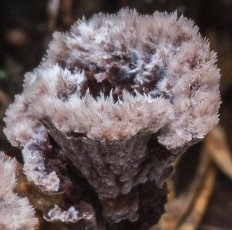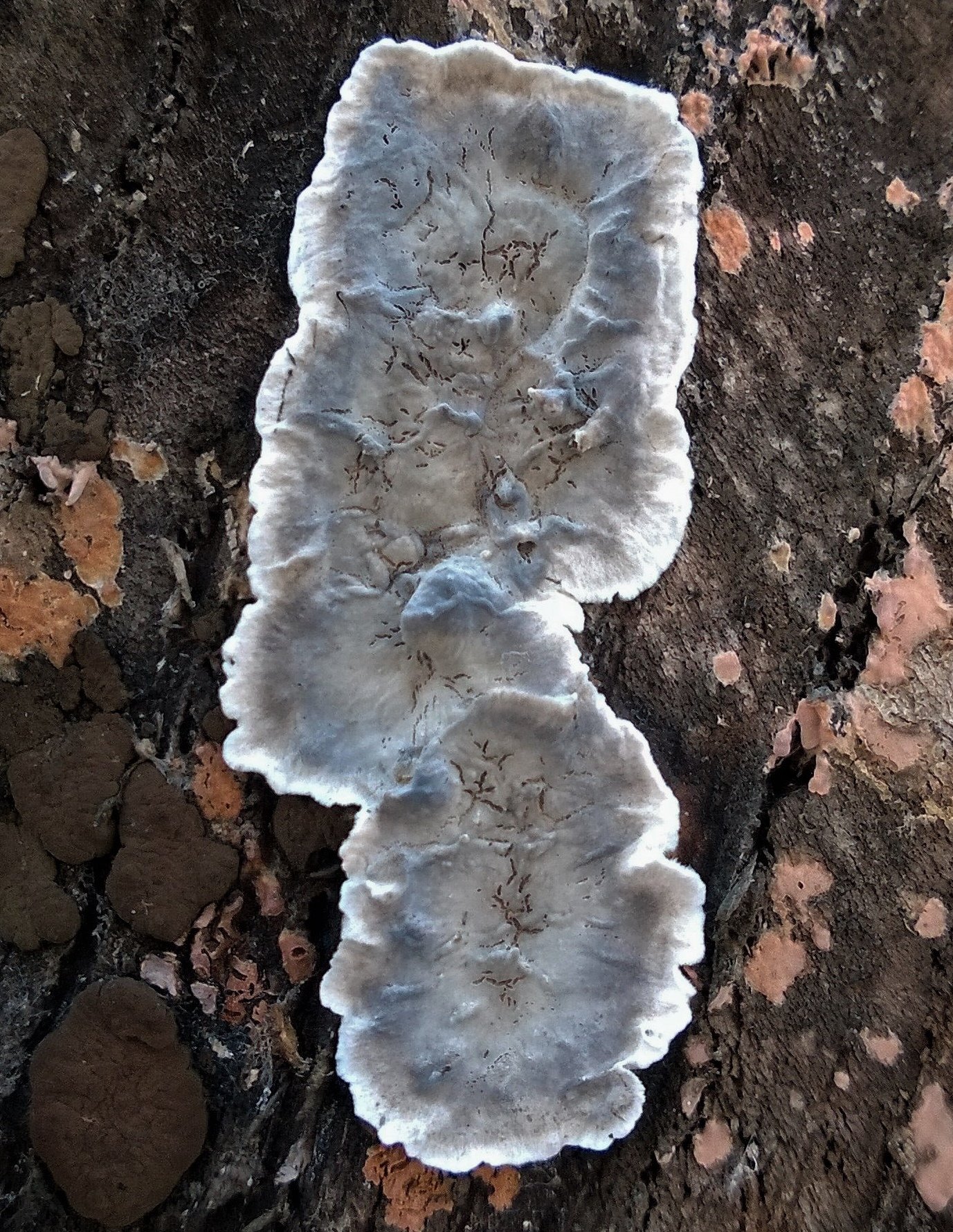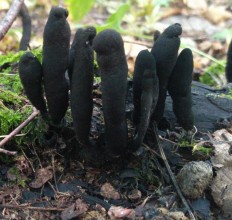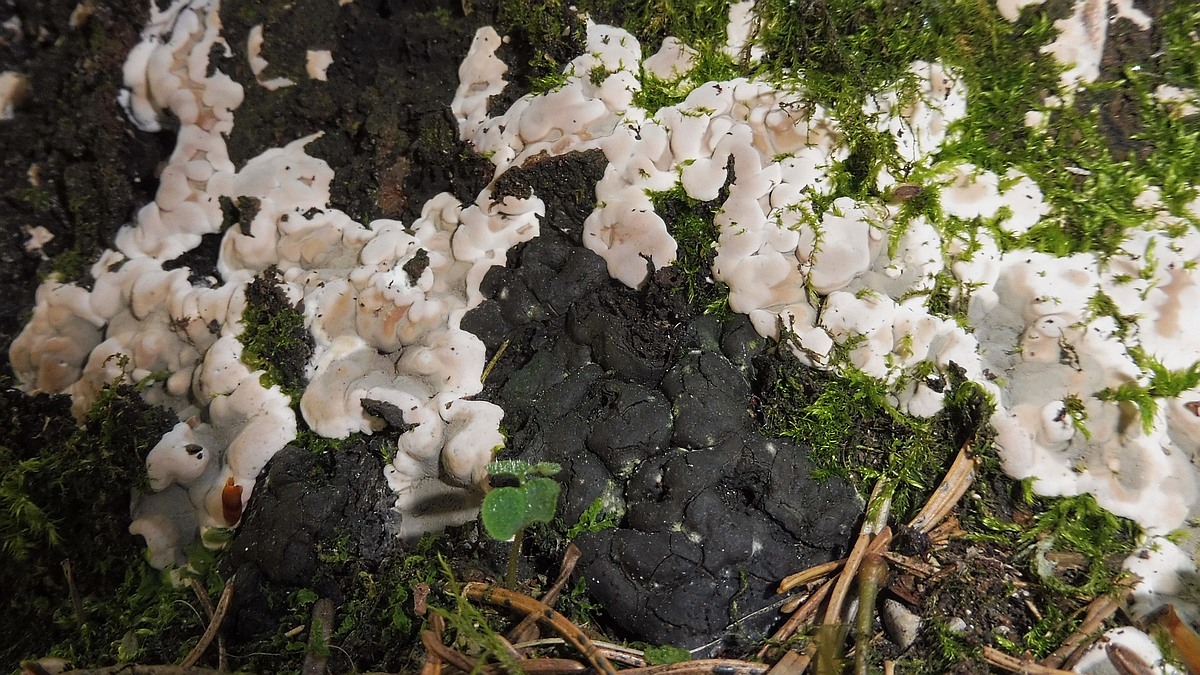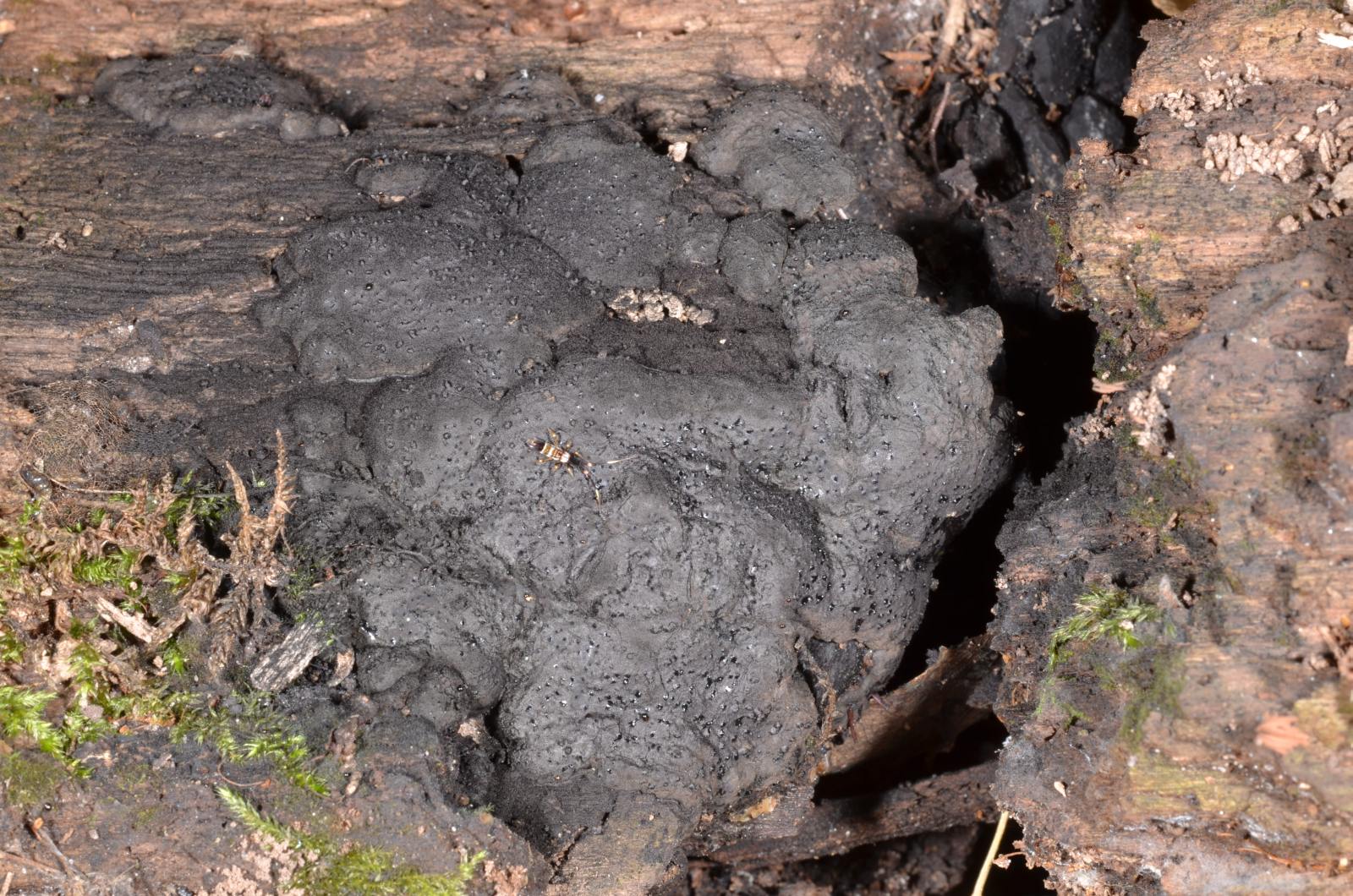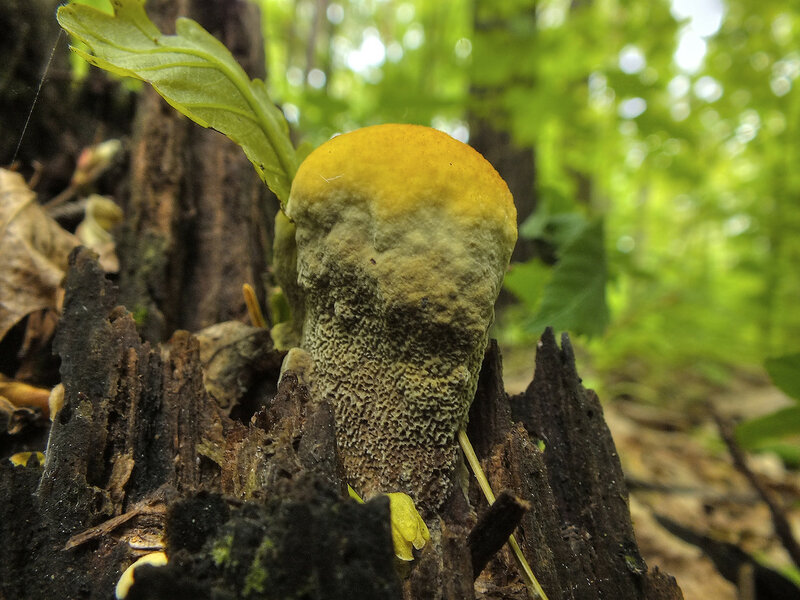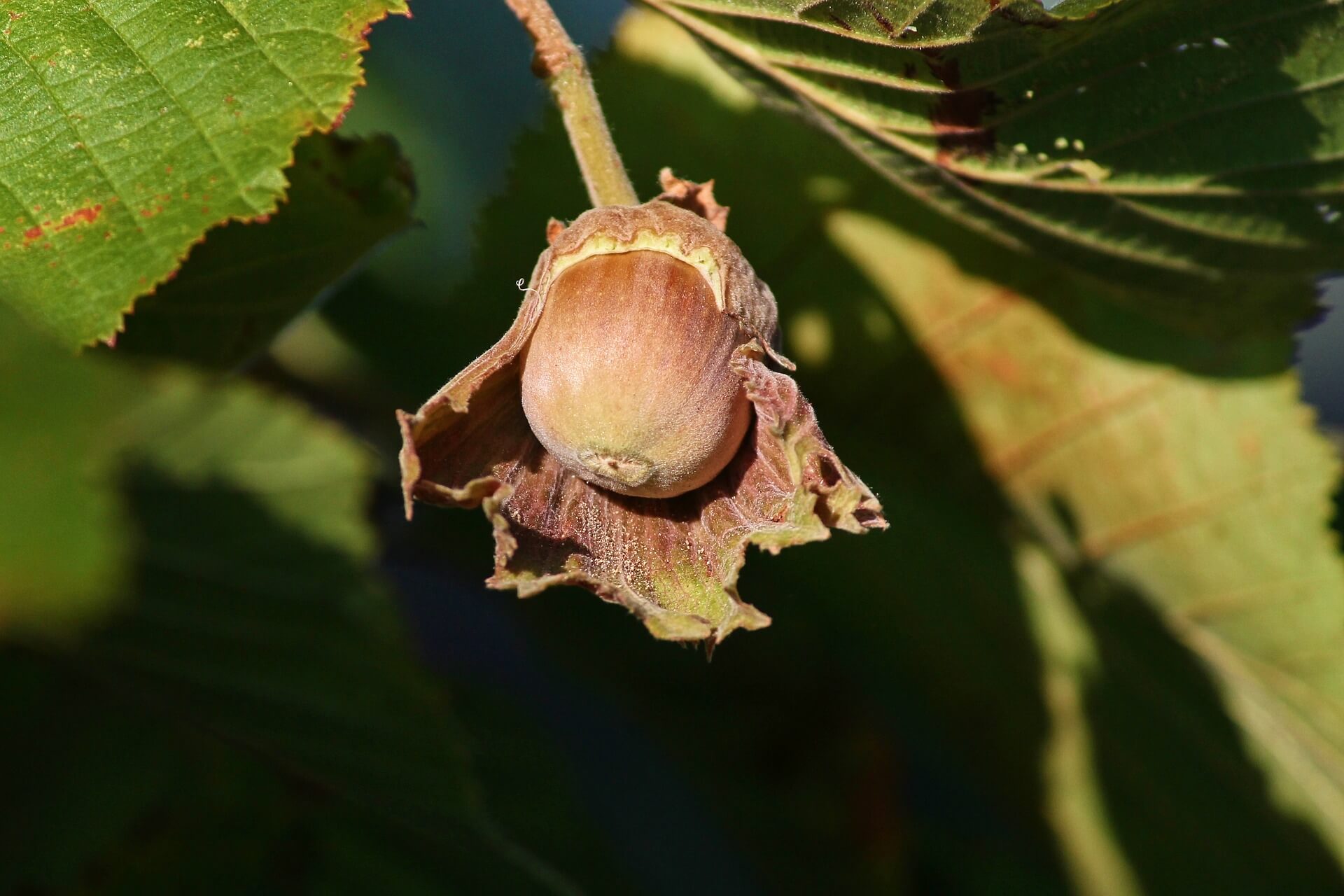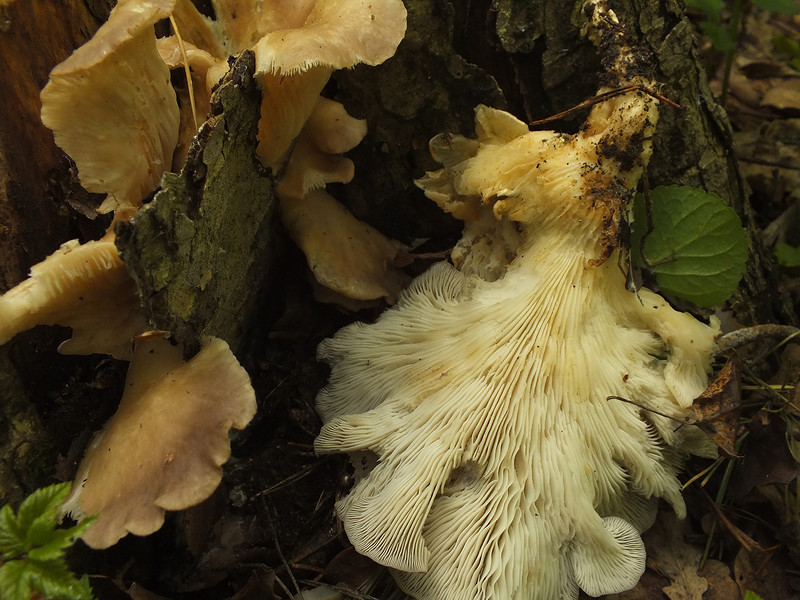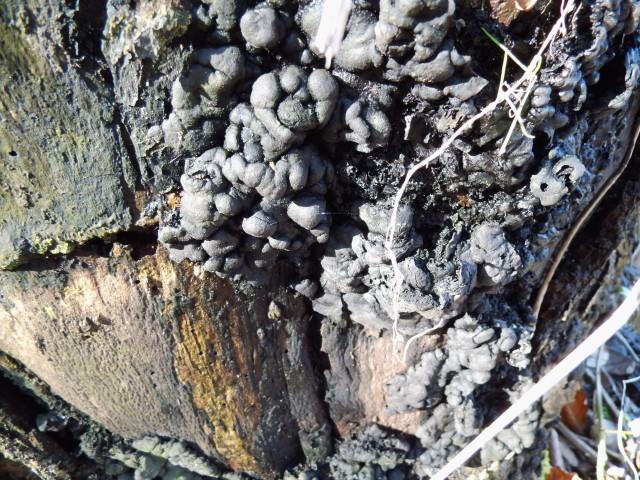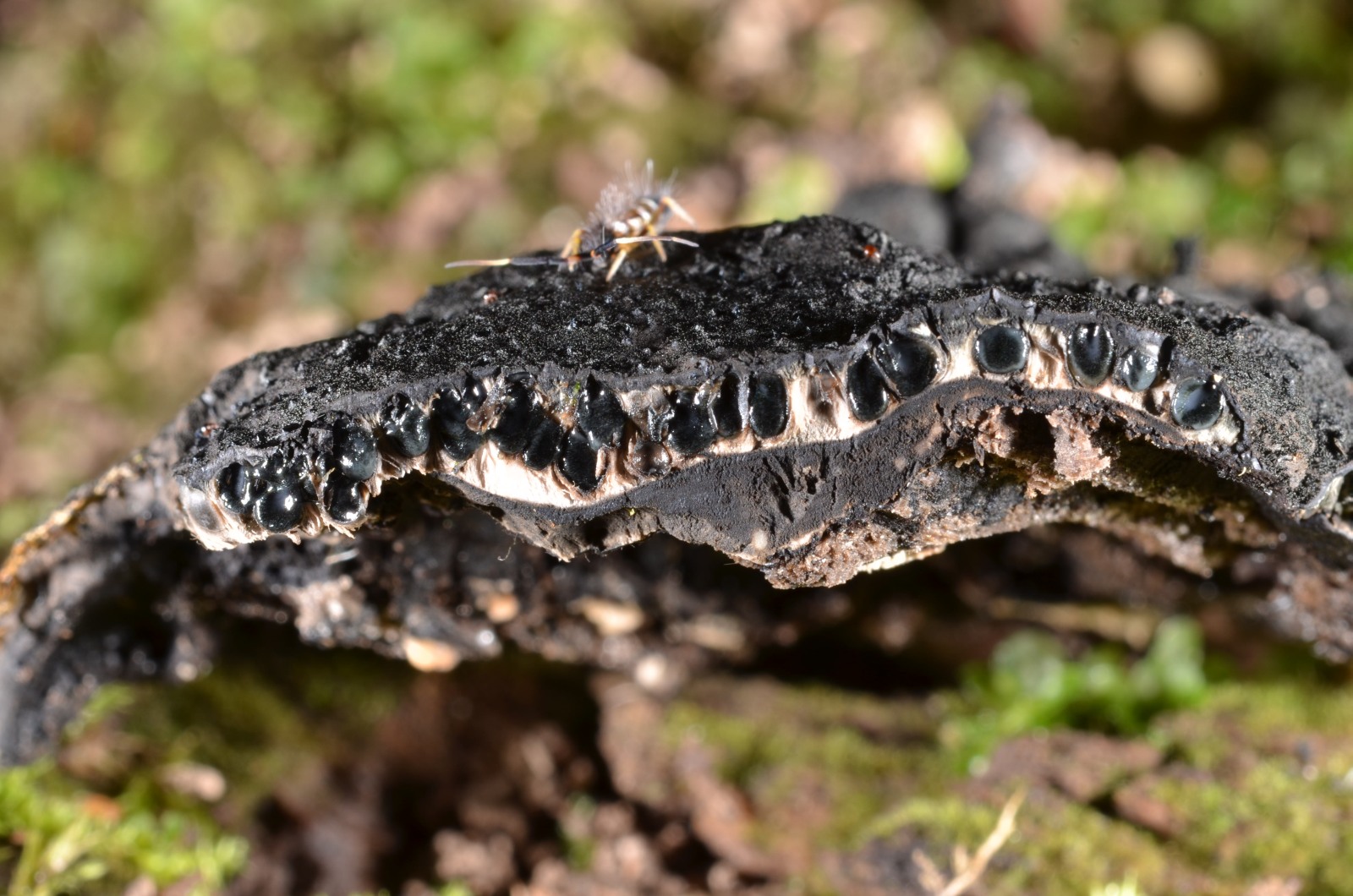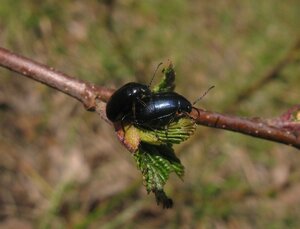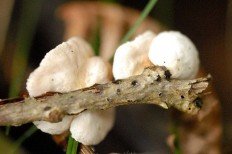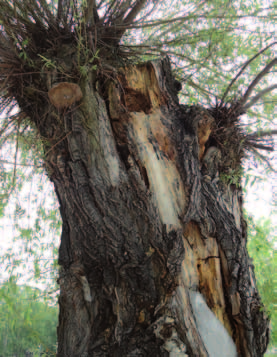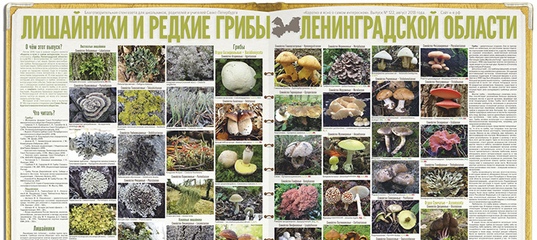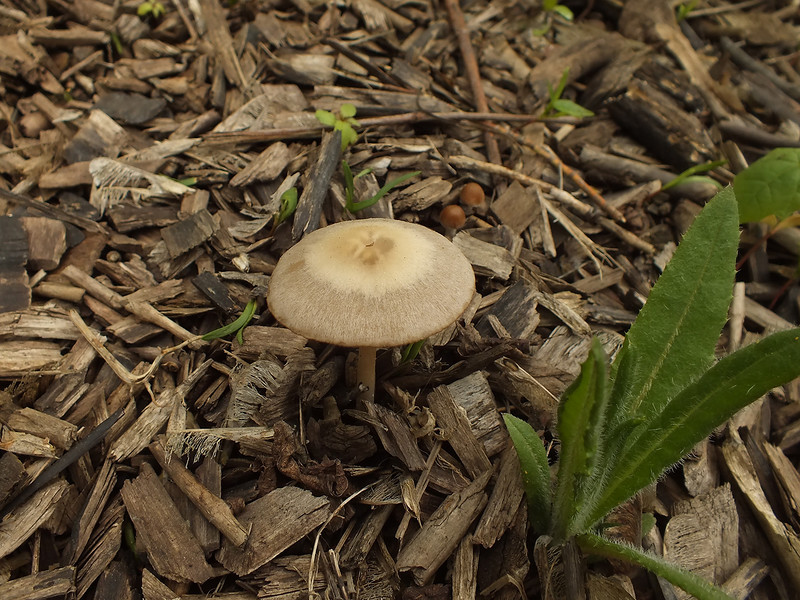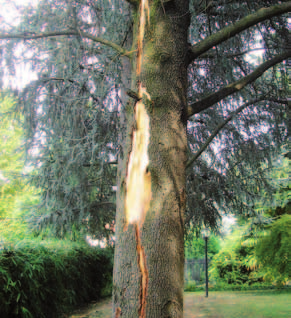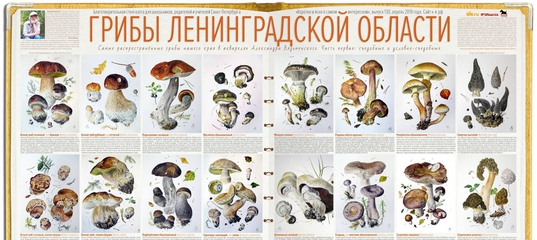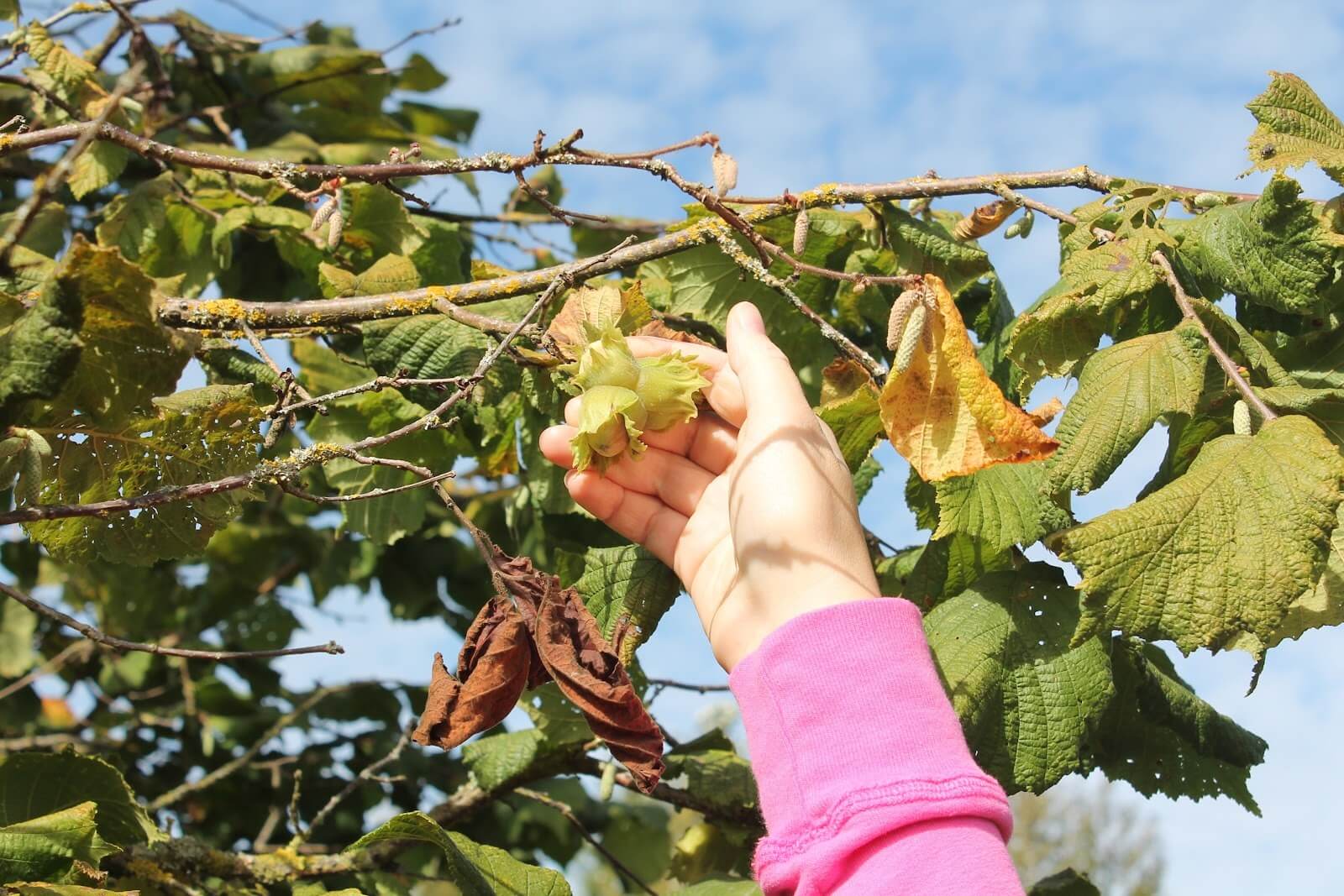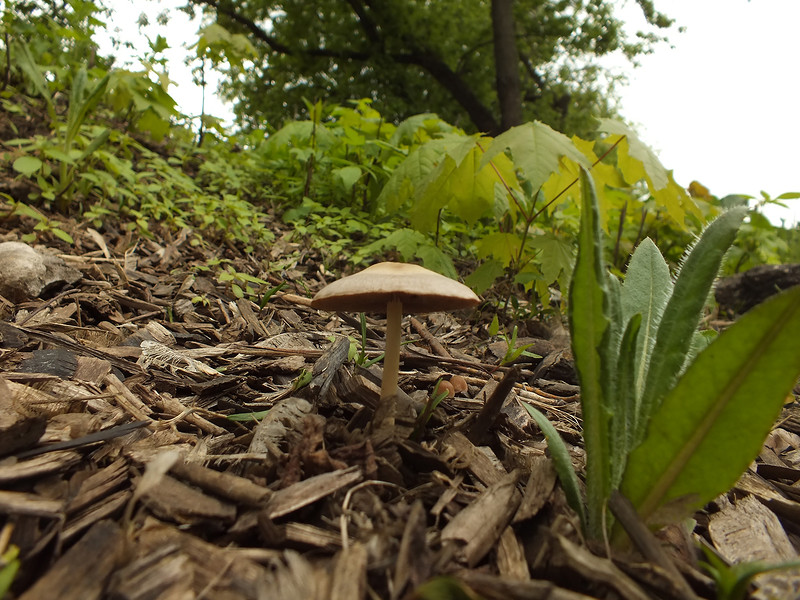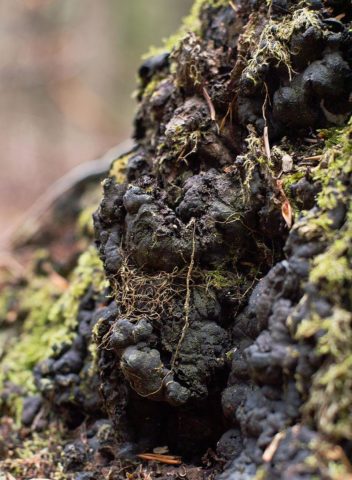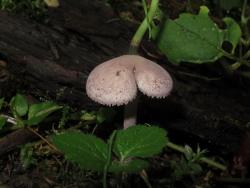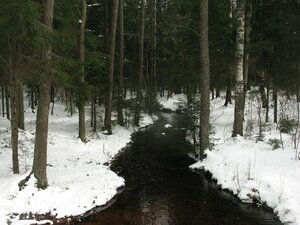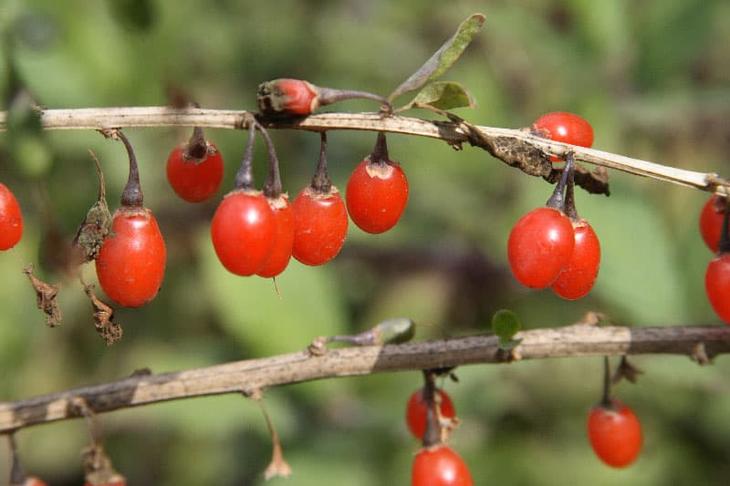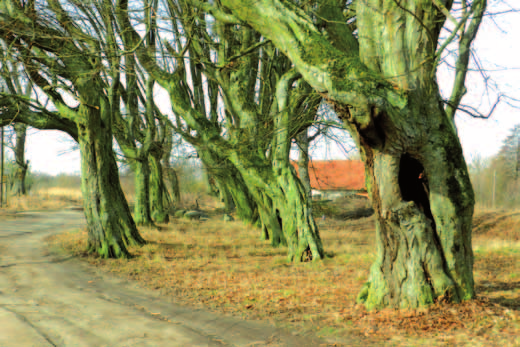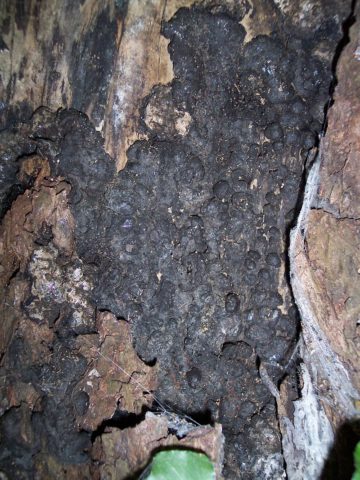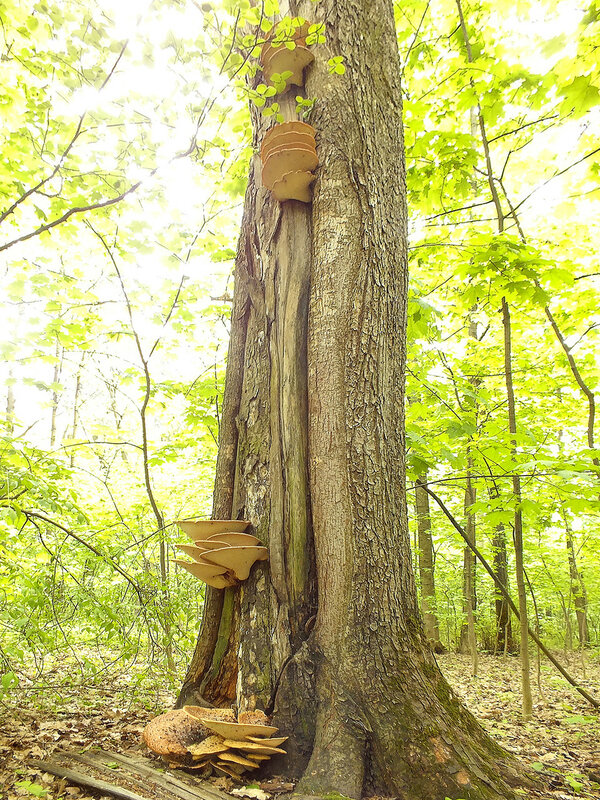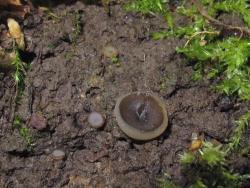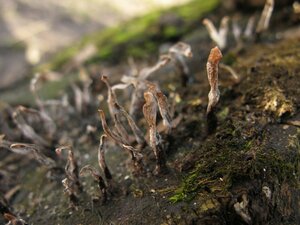Xylaria multiforme (Xylaria polymorpha)
Synonyms:
- Xilaria multifaceted
- Xilaria polymorphic
- Sphaeria polymorpha
- Hypoxylon polymorphum
- Xylosphaera polymorpha
- Hypoxylon var. polymorphum
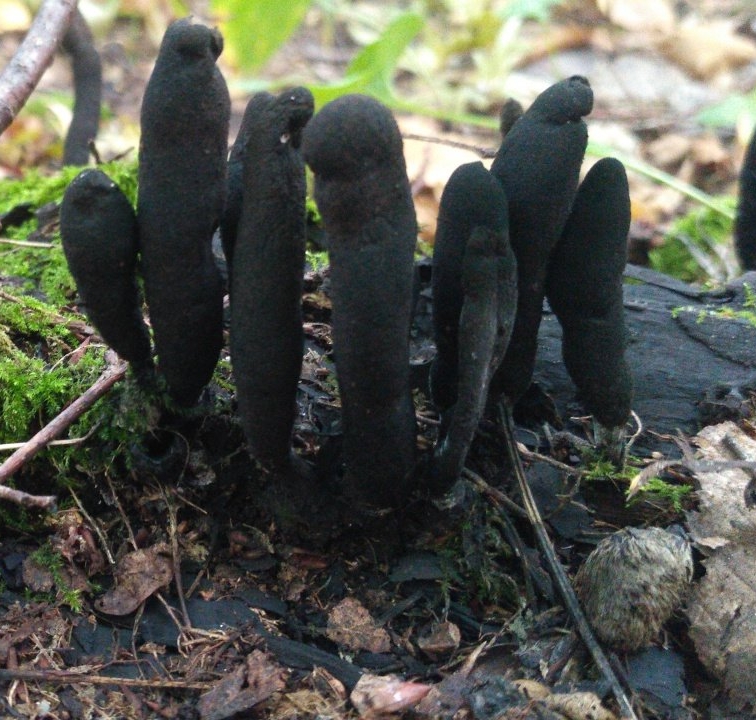
This strange mushroom, often called "Dead Man's Fingers", can be found from spring to late autumn, as it develops very slowly. Young - pale, bluish, often with a whitish tip. Its pale outer cover is asexual spores, conidia, appearing at an early stage of development. By summer, however, the mushroom begins to turn black, and by the end of summer or fall, it is completely black and dried out. Somewhere in the middle of this transformation process, Xilaria multifaceted really looks like "dead man's fingers" eerily sticking out of the ground. However, in the final stages, most likely, it looks like a "present" left by a domestic cat.
Xylaria polymorpha is the most common of the larger Xylaria species, but the species name, Dead Man's Fingers, is often used broadly to encompass several species that are microscopically differentiated.
Description
Ecology: saprophyte on decaying deciduous stumps and logs, as a rule, at the base of a tree or very close, but sometimes it can grow as if from the ground - in fact, there are always buried remains of wood there, in the ground. It can grow singly, but is more common in clusters. Causes soft wood rot.
Fruit body: 3-10 cm in height and up to 2.5 cm in diameter. Hard, dense. More or less like a club or a finger, but sometimes flattened, it can be branched. Usually with a rounded tip. In youth it is covered with a pale bluish, gray-bluish, or purple dust of conidia (asexual spores), with the exception of the whitish tip, but as it matures it becomes blackish with a pale tip and eventually completely black, absolutely. The surface becomes thinly dried and wrinkled, a hole forms in the upper part through which ripe spores are thrown out.
Flesh: white, whitish, very tough.
Microscopic characteristics: spores 20-31 x 5-10 µm smooth, fusiform; with straight embryonic fissures extending from 1/2 to 2/3 of the spore length.
Season and distribution
Widespread throughout the planet. Usually it grows in groups, prefers to live on rotten wood and stumps of deciduous trees, favors oaks, beeches, elms, can grow on conifers. Sometimes found on the trunks of weakened and damaged living trees. From spring to frost, ripe fruit bodies do not disintegrate for a long time.
Similar species
Xylaria long-legged (Xylaria longipes)
It is much less common and is characterized by thinner, graceful fruiting bodies, but a microscope will be needed for final identification.
Other information about the mushroom
Possesses medicinal properties. In folk medicine in some countries it is used as a diuretic and as a drug to increase lactation.
Photo: Sergey.
External description of the mushroom
The diameter of the cap of the common mycene is 1-2 cm. In young mushrooms, it has a convex shape, subsequently becoming prostrate or broadly conical. Sometimes a tubercle is noticeable in the central part of the cap, but most often it is characterized by a depressed surface. The edge of the cap of this mushroom is furrowed and lighter in color. The cap itself is transparent, stripes are visible on its surface, has a gray-brown, gray-brown, pale or grayish-fawn color. It is characterized by the presence of a brown eye.
The plates of the fungus are rarely located, only 14-17 of them reach the surface of the mushroom stem. They have an arched shape, grayish-brown or white, slimy edge. They have excellent flexibility, run down on the leg. The mushroom spore powder is white.
The length of the leg reaches 2-6 cm, and its thickness is 1-1.5 mm.It is characterized by a cylindrical shape, inside - hollow, very hard, smooth to the touch. The color of the leg is light brown at the top, it becomes darker downward. At the base, it is covered with hard white hairs. The surface of the leg is slimy and sticky.
The pulp of mycene is usually whitish, has no taste, very thin. Her smell is not expressive, it looks like a rare one. Spores have an elliptical shape, are 4-spore basidia, and are 7-8 * 3.5-4 microns in size.
Metadata
This file contains additional information such as Exif metadata which may have been added by the digital camera, scanner, or software program used to create or digitize it. If the file has been modified from its original state, some details such as the timestamp may not fully reflect those of the original file. The timestamp is only as accurate as the clock in the camera, and it may be completely wrong.
| Camera manufacturer | EASTMAN KODAK COMPANY |
|---|---|
| Camera model | KODAK DX4530 ZOOM DIGITAL CAMERA |
| Exposure time | 1/30 sec (0.033333333333333) |
| F-number | f / 2.8 |
| Date and time of data generation | 10:02, 20 July 2010 |
| Lens focal length | 8 mm |
| Y and C positioning | Centered |
| Exposure Program | Normal program |
| Exif version | 2.2 |
| Date and time of digitizing | 10:02, 20 July 2010 |
| APEX shutter speed | 5 |
| APEX aperture | 3 |
| Apex exposure bias | |
| Maximum land aperture | 3 APEX (f / 2.83) |
| Metering mode | Pattern |
| Light source | Unknown |
| Flash | Flash fired, compulsory flash firing |
| Color space | sRGB |
| Exposure index | 140 |
| Sensing method | One-chip color area sensor |
| Custom image processing | Normal process |
| Exposure mode | Auto exposure |
| White balance | Auto white balance |
| Digital zoom ratio | |
| Focal length in 35 mm film | 38 mm |
| Scene capture type | Standard |
| Contrast | Normal |
| Saturation | Normal |
| Sharpness | Normal |
| Subject distance range | Macro |
Morphology
Shoots. The stem under the cotyledons is reddish, thin and tall, up to 30 mm in length. Cotyledons linear 8 - 12 x 1.5 - 2 mm, dull dark green above. Below - reddish purple. As they develop, they turn green. The first leaves are oblong-rhombic, opposite. The apex is obtuse, the margin is indistinctly wavy. Subsequent ones are of the same shape, but with pronounced denticles along the edge, are located alternately. Seedlings are covered with small vesicular hairs, mealy. The supra-cotyledonous internode is highly developed, up to 7 mm long. (Vasilchenko I.T., 1965)
The leaves of adult plants are ovoid, sometimes oblong or lanceolate. The edges are mostly unevenly serrated, less often whole-edged. The base is wedge-shaped or spear-shaped. (Keller B.A., 1934)
The stem is branched, straight, often with a mealy bloom. (Komarova V.L., 1949)
Flowers - glomeruli. Inflorescences are spike-shaped, folded into a branched panicle or located in axillary almost leafless cymose inflorescences. Perianth of keeled leaves. (Komarova V.L., 1949)
The fruits are nuts. They are located in the pericarp with five yellowish-brown leaves. The surface of the fruit is matte. Color - gray-green. Diameter about 2 mm. Fruits are roundly compressed, slightly convex from the dorsum. From the side of the fruit scar - flattened. The fruit scar is wart-shaped with a round rim. Ripe nuts are dark gray or reddish. (Puponin A.I., 1998)
Seeds - roundly compressed, the embryo is annular, peripheral. The spine is protruding. The seed scar is located at the base of the groove. The surface is smooth, shiny with an indistinct mesh pattern. Color - intense black or dark cherry. Seed size 1.5 - 1.75 x 0.75 mm. Weight of 1000 pieces - 1.2 - 1.5 g.
Seed polymorphism is observed on one plant. As a rule, there are three groups:
1.Fast sprouting, large, light, flat.
2. Germinating in the second year, smaller, black or greenish-black.
3. Germinate in the third year, small, almost round-oval, black. (Puponin A.I., 1998)
The root system is pivotal. (Fisyunov A.V., 1984)
Biology and development
White Mary is propagated by seeds. Germination increases in dry years. Seeds germinate best from a depth of 8 - 10 cm. Seeds remain viable for 38 years. (Fisyunov A.V., 1984)
Seed germination is observed from March to late autumn. The minimum germination temperature is + 3 ° C, the optimum is + 18 ° C - + 24 ° C. (Fisyunov A.V., 1984)
Seedlings are able to survive light spring frosts. On sunny days, they grow quickly, roots develop first. By the time the breads are removed (the second half of summer), white gauze grows strongly, especially on fertile soils with sufficient moisture. The height of the bush can reach 3 m, the girth is 4 m or more. The depth of the deepening of the main root is up to 2 m. Usually the main root is thin, fragile. The lateral ramifications are numerous and are located almost horizontally. (Keller B.A., 1934)
White Mary blooms from July to September. Fruiting in August - October. Fertility reaches 700,000 nuts. (Fisyunov A.V., 1984)
Captions
Licensingedit
I, the copyright holder of this work, hereby publish it under the following licenses:
| Permission is granted to copy, distribute and / or modify this document under the terms of the GNU Free Documentation License, Version 1.2 or any later version published by the Free Software Foundation; with no Invariant Sections, no Front-Cover Texts, and no Back-Cover Texts. A copy of the license is included in the section entitled GNU Free Documentation License. |
|
You may select the license of your choice.
File history
Click on a date / time to view the file as it appeared at that time.
| Date / Time | Thumbnail | Dimensions | User | Comment | |
|---|---|---|---|---|---|
| current | 23:32, 13 September 2010 | 1,932 × 2,580 (2.03 MB) | Toffel | {{Information | Description = {{de | 1 = Brandkrustenpilz ("Kretzschmaria deusta")}} | Source = {{own}} | Author = Toffel | Date = 2010-09-13 | Permission = see below | other_versions =} } Category: Kretzschmaria deusta |
The following page uses this file:
Kretzschmaria deusta
File usage on other wikis
The following other wikis use this file:
- Usage on ceb.wikipedia.org
- Usage on de.wikipedia.org
- Usage on nl.wikipedia.org
- Usage on sv.wikipedia.org
Metadata
This file contains additional information such as Exif metadata which may have been added by the digital camera, scanner, or software program used to create or digitize it. If the file has been modified from its original state, some details such as the timestamp may not fully reflect those of the original file. The timestamp is only as accurate as the clock in the camera, and it may be completely wrong.
| Camera manufacturer | EASTMAN KODAK COMPANY |
|---|---|
| Camera model | KODAK DX4530 ZOOM DIGITAL CAMERA |
| Exposure time | 1/30 sec (0.033333333333333) |
| F-number | f / 2.8 |
| Date and time of data generation | 10:02, 20 July 2010 |
| Lens focal length | 8 mm |
| Y and C positioning | Centered |
| Exposure Program | Normal program |
| Exif version | 2.2 |
| Date and time of digitizing | 10:02, 20 July 2010 |
| APEX shutter speed | 5 |
| APEX aperture | 3 |
| Apex exposure bias | |
| Maximum land aperture | 3 APEX (f / 2.83) |
| Metering mode | Pattern |
| Light source | Unknown |
| Flash | Flash fired, compulsory flash firing |
| Color space | sRGB |
| Exposure index | 140 |
| Sensing method | One-chip color area sensor |
| Custom image processing | Normal process |
| Exposure mode | Auto exposure |
| White balance | Auto white balance |
| Digital zoom ratio | |
| Focal length in 35 mm film | 38 mm |
| Scene capture type | Standard |
| Contrast | Normal |
| Saturation | Normal |
| Sharpness | Normal |
| Subject distance range | Macro |
Control measures
Agrotechnical:
- high-quality soil cultivation in fallow fields;
- timely plowing of the soil in spring;
- compliance with crop rotation;
- destruction of white mari thickets in uncultivated areas. (Keller B.A., 1934)
Chemical:
- spraying with herbicides during the germination period;
- spraying with herbicides of adult plants.
The drugs of the group of sulfonylureas, aryloxyalkanecarboxylic acids, imidazolinones, pyridine derivatives, and other substances are effective. (Fisyunov A.V., Directory, 1984) (State catalog, 2017)
Chemical pesticides:
Spraying during the growing season:
- Crossbow, SE
- Grand Prix, EDC
- Referee, VGR
- Herbix, VRK
- Rapier, CE
- Megalith, BP
- Cicero, EDC
- Garrison, VR
Spraying the soil before sowing:
Sapphire, VRK
(State catalog, 2017)
Compiled by: P.I. Grigorovskaya, T.V. Zharyokhina
Similar species, distinctive features from them
On the territory of Russia, several varieties of mycene fungi are widespread, characterized by the mucous surface of the stem and cap, and also having similarities with the mycena vulgaris (Mycena vulgaris). Let's list the most famous varieties:
- The mycena is mucous. It has many subspecies, which have one common feature, namely, the yellowish color of a thin stem. In addition, mucous mycenes, as a rule, have large spores of 10 * 5 microns in size, the fungus has plates adhered to the pedicle.
- Mycena rorida, which is currently synonymous with Roridomyces dewy. This type of fungus prefers to grow on rotten wood of deciduous and coniferous trees. On its leg there is a mucous sheath, and the spores are larger than those of the mycene ordinary. Their size is 8-12 * 4-5 microns. Basidia are only two-spore.
The Latin name for mycena vulgaris (Mycena vulgaris) comes from the Greek word mykes, which means mushroom, as well as the Latin species term vulgaris, which is translated as ordinary.
Mycena vulgaris (Mycena vulgaris) is listed in some countries in the Red Data Books. Among such countries are Denmark, Norway, the Netherlands, Latvia. This type of fungus is not listed in the Red Book of the Russian Federation.

